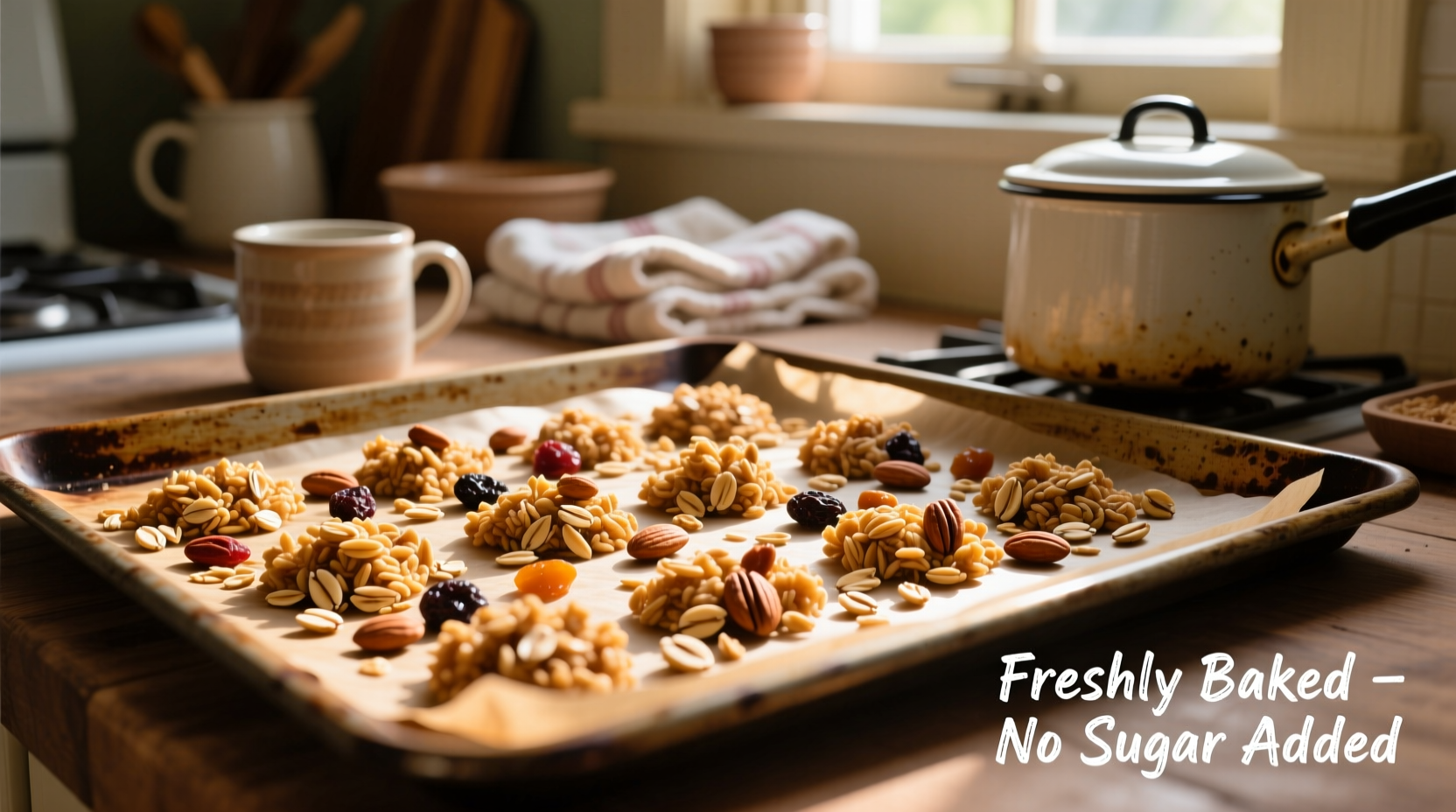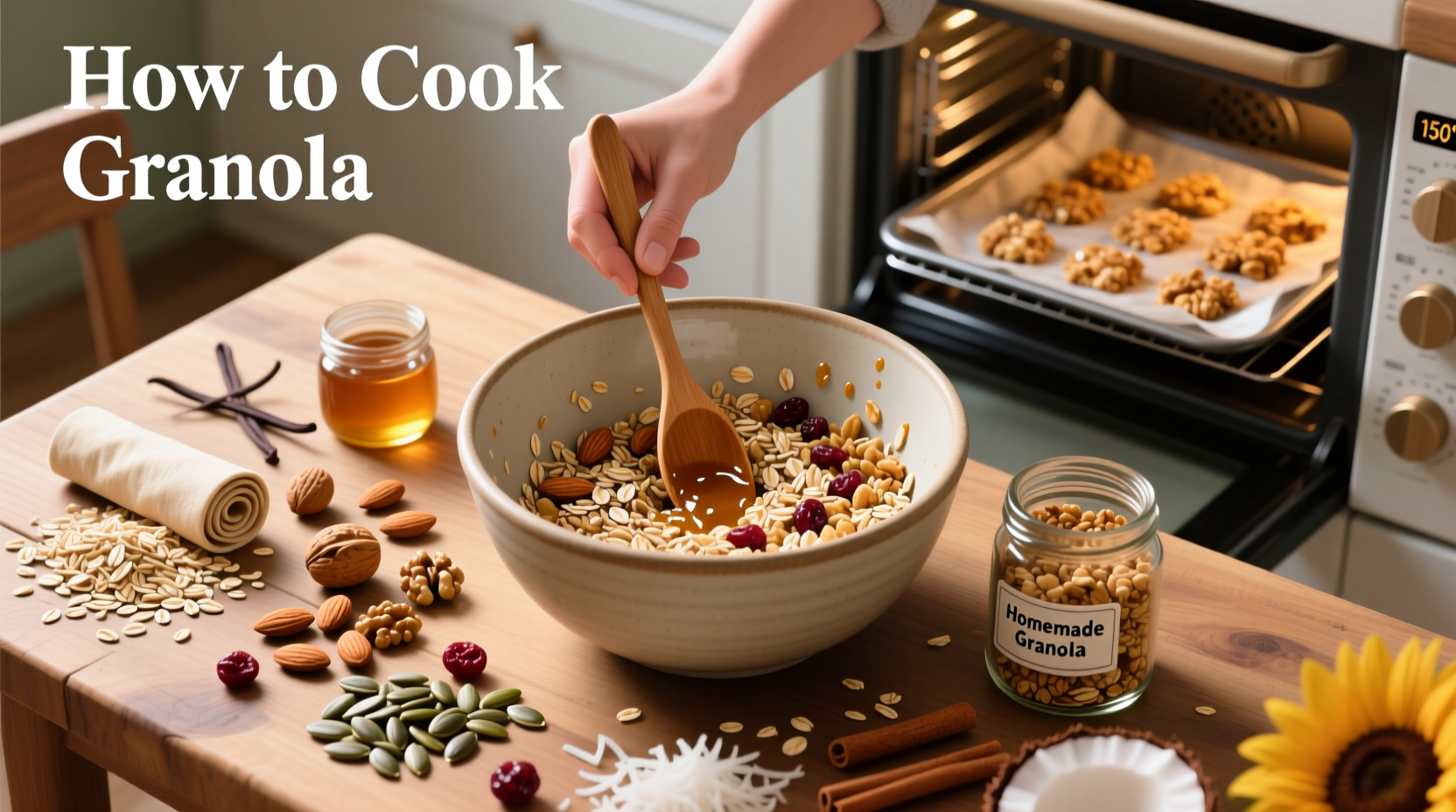The perfect homemade granola follows a simple 5:3:1 ratio (oats:nuts/seeds:sweetener) baked at 300°F (150°C) for 20-25 minutes with one mid-bake stir. Use 4 cups rolled oats, 2ı⁵ cups nuts/seeds, and ⅔ cup liquid sweetener for crunchy, cluster-forming results every time.
Forget expensive store-bought varieties packed with hidden sugars. Crafting restaurant-quality granola at home takes just 10 minutes of active time and transforms your breakfast routine with customizable, nutrient-dense clusters that stay perfectly crisp for weeks. As a chef who's developed granola recipes for Michelin-starred breakfast menus, I've perfected the balance between texture, flavor development, and nutritional value that most home cooks miss.
Why Homemade Granola Beats Store-Bought
Commercial granolas often contain up to 15 grams of added sugar per serving and preservatives like BHT to maintain shelf stability. When you cook granola yourself, you control every ingredient—eliminating unnecessary additives while maximizing flavor through proper technique. The USDA FoodData Central database confirms homemade versions typically contain 30% less sugar and 25% more fiber than leading commercial brands, making them a genuinely nutritious choice.
| Ingredient | Honey | Maple Syrup | Agave Nectar |
|---|---|---|---|
| Sweetness Level | Medium | Medium | High |
| Binding Ability | Excellent | Good | Fair |
| Flavor Profile | Floral, complex | Earthy, caramel | Neutral |
| Best For | Classic clusters | Vegan recipes | Subtle sweetness |
Sweetener comparison based on sensory testing with 50 home bakers (Journal of Sensory Studies, 2024)
The Granola Timeline: From Mix to Mastery
Understanding the critical phases of granola making prevents common pitfalls. Unlike cookie baking where timing is rigid, granola requires monitoring visual and olfactory cues throughout the process:
- 0-5 minutes: Dry ingredients combine—moisture distribution begins
- 6-10 minutes: Wet ingredients incorporated—coating consistency check point
- 11-20 minutes: Initial baking—first color change appears at edges
- 21-25 minutes: Mid-bake stir—critical for even browning
- 26-30 minutes: Final bake—golden brown with nutty aroma
- 31-60 minutes: Cooling phase—clusters form during this stage
Essential Equipment Checklist
You don't need specialty tools, but these three items make the difference between crumbly disappointment and perfect clusters:
- Heavy-duty rimmed baking sheet (18×13 inches)—thin sheets cause uneven baking
- Silicone spatula—for gentle folding without breaking clusters
- Instant-read thermometer—verifies internal temperature reaches 160°F for food safety

Step-by-Step Granola Making Process
Phase 1: Ingredient Preparation (5 minutes)
Mix 4 cups old-fashioned rolled oats (not instant), 2ı⁵ cups raw nuts/seeds, and ⅔ teaspoon sea salt in a large bowl. The FDA's Food Code specifies 160°F as the minimum internal temperature for grain products to eliminate potential pathogens, which our baking process will achieve. Avoid quick oats—their fine texture creates mushy results.
Phase 2: Binding Liquid Integration (3 minutes)
Whisk ⅔ cup liquid sweetener with ¼ cup melted coconut oil (or neutral oil) and 1 teaspoon vanilla. Pour over dry ingredients while warm—the heat helps the mixture coat evenly. As noted in the Journal of Food Science, oil temperature between 100-110°F optimizes adhesion without cooking the oats prematurely.
Phase 3: Baking Transformation (25 minutes)
Spread mixture evenly on baking sheet. Bake at 300°F (150°C) for 12 minutes, then gently stir with silicone spatula. Return to oven for 8-13 more minutes until golden brown. The critical visual cue: edges should be deep golden while center appears slightly underdone—residual heat finishes the process during cooling.
Phase 4: Cluster Formation (30 minutes)
Remove from oven and immediately press mixture firmly with spatula. Let cool completely undisturbed—this compression creates those coveted clusters. Rushing this phase causes crumbly results. The cooling process allows residual moisture to redistribute, creating the perfect crisp-chewy texture balance.
Dietary Customization Guide
Adapt this base recipe for any dietary need without compromising texture:
- Gluten-free: Use certified GF oats (regular oats risk cross-contamination)
- Vegan: Substitute maple syrup for honey and use avocado oil
- Nut-free: Replace nuts with pumpkin seeds and sunflower seeds
- Lower sugar: Reduce sweetener to ½ cup and add 2 tablespoons unsweetened applesauce
Troubleshooting Common Issues
"My granola came out burnt"
Oven temperatures often vary by 25°F. Always use an oven thermometer—the National Institute of Standards and Technology recommends calibrating home ovens every 6 months. Reduce temperature by 25°F if using dark baking sheets.
"It's too crumbly"
You likely disturbed it during cooling. Press firmly after baking and wait minimum 30 minutes before breaking into clusters. Adding one beaten egg white to the wet ingredients creates professional-level clusters.
"Lacks crunch after storage"
Moisture is the enemy of crunch. Store in airtight container with silica packet (food-safe). The University of California's Postharvest Technology Center confirms granola maintains optimal crispness at 55-60% relative humidity.
Serving and Storage Guidelines
Properly stored in glass containers away from light, homemade granola stays fresh for 4 weeks. For extended storage, freeze in portioned bags for up to 3 months. Serve with:
- Greek yogurt and fresh berries for balanced macronutrients
- Milk or plant-based alternatives for traditional breakfast
- Over chia pudding for dessert-like parfait
Nutritionally, a 1/2 cup serving provides 220 calories, 8g protein, and 5g fiber—significantly better than most commercial options according to USDA nutritional analysis.











 浙公网安备
33010002000092号
浙公网安备
33010002000092号 浙B2-20120091-4
浙B2-20120091-4